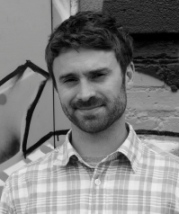
Donna Neuwirth and Jay Salinas
Ecology and economy share the same root word, oikos referring to a household or family. Because it is at that level that these concepts can best be understood –a discrete unit that can sustain itself, financially, culturally and environmentally; large enough to have impact; diversified enough to be resilient, yet small enough to retain knowledge and control of its elements.
Economies in rural communities retains some of this compact nature. We operate at a level where our work can have measurable impact. We can communicate directly with elected officials, business leaders and seldom have to introduce ourselves more than twice.
Our original household economic goals were modest- we sought to derive a living by growing and marketing organic vegetables. Though our backgrounds were in the arts, we were used to performing duties not directly related to our vocation in order to pay the bills. But we quickly discovered that there were connections between the fields of culture and agriculture- not the least of which is the work of farming. But for us, without the necessary balance of art, it would prove unsustainable.

Wormfarm Institute Combine
Because of this, the Wormfarm Institute has always found the relationship between a vibrant culture and economic activity to be a natural one. Over the past several years, as our projects have grown larger and more complex, involving several communities simultaneously we have come to value projects in part in terms of economic development. This isn’t a stretch or compromise but instead a natural result of working to increase diversity, vibrancy and resilience whether in our farm fields or our small downtown. This coincides with a nascent re-localization movement growing in response to the global economic upheavals of the last 8 years. It is easier now to make this oikos (human-scale) argument since most folks are aware how unwise it is to be dependent upon distant financial markets operated by self-interested entities, personal or corporate, untethered to any community.
Read More










 Kyle Dlabay
Kyle Dlabay


















